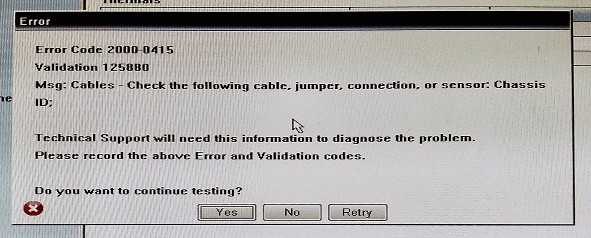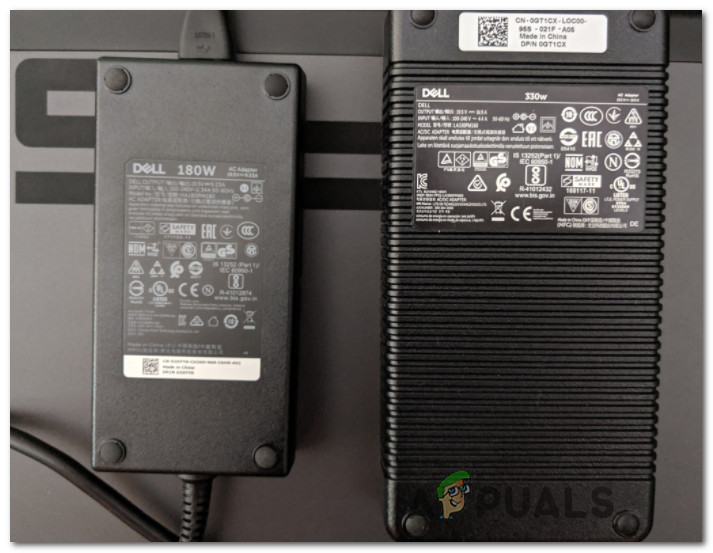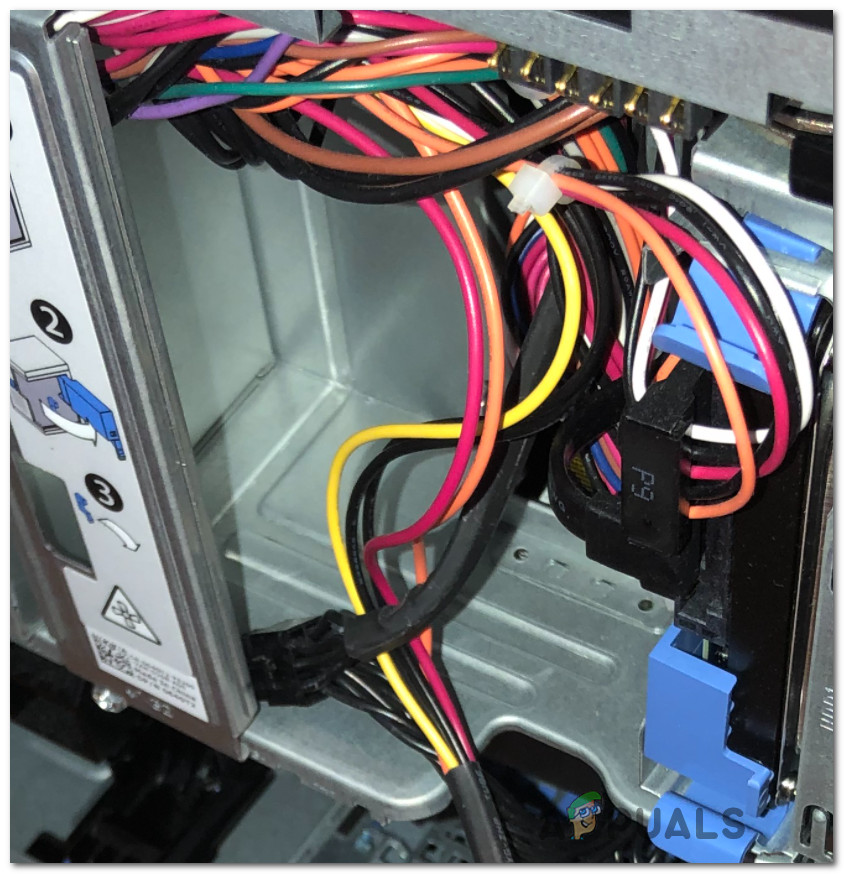Fixing Error Code 2000-0415 on DELL Computers
Some Dell PC users are encountering the 2000-0415 error when running the EPSA (Enhanced Pre-Boot System Assessment) diagnostics tool prior to booting up the system. Most affected users are reporting this error to occur after they received their system back from repairs or after they made some hardware modification themselves.

After we analyzed every potential scenario that might be triggering this error code, here’s a list of scenarios that are known to cause the 2000-0415 when running the EPSA tool on a Dell computer:
- The A/C power adapter is not connected – If you’re encountering this issue with a portable Dell device (laptop, notebook, ultrabook, or Windows tablet, chances are the ePSA scan is triggering this error because the voltages and frequencies of the internal components are lower than expected. This particular scenario is only a false positive that can be resolved by connecting the A/C power adapter.
- Unconnected power cable – As it turns out, this issue can also occur due to an SSD or HDD cable that is not connected to the PSU via the power cable. In this case, you can resolve the issue by taking the side/back case apart and ensuring that every component is connected to the power sources.
- Old configuration data is maintained by CMOS battery – If you recently made some hardware changes to your Dell PC, you can expect to see this error occurring because the CMOS battery is maintaining outdated configuration data and thus confusing the ePSA scan. In this case, you can resolve the issue by clearing the CMOS battery.
Now that you are familiar with every scenario that might cause the 2000-0415, move down to the next section below for instructions on resolving this particular issue.
1. Connect the A/C Power Adapter (if applicable)
By far, the most common instance that will produce this error is a scenario in which the A/C power adaptor is not connected to the machine that is performing the ePSA scan.
Keep in mind that the Enhanced Pre-Boot System Assessment scan will execute a complete verification of every involved hardware component – This includes the assessment of voltages and frequencies of crucial components such as the CPU, GPU, and memory.
Note: This is only applicable for Dell devices that have a built-in or detachable battery (laptops, ultrabooks, Windows Tablets, etc.).
One of the reasons why the voltage or frequency values are different than the expected equivalents is if the Dell device currently draws power from the battery instead of drawing it directly from a power outlet.
If this scenario is applicable, this will likely mean that the frequencies of your hardware components are lower than expected, which might determine the ePSA tool to throw the 2000-0415 due to concerns of a hardware failure.
Fortunately, you can prevent the error from occurring simply by connecting the Del device to the power adaptor and repeating the ePSA scan.

In case connecting the Dell power adaptor didn’t resolve the issue or this scenario is not applicable, move down to the next potential fix below.
2. Check for an Unconnected Cable
If you only started dealing with this issue after taking your computer to a PC technician or after making some changes (component-wise), you should check either every cable is correctly connected.
Keep in mind that the 2000-0415 error can also be a symptom of a component that doesn’t have a power cable connected to it – The most common culprits, in this case, are SATA or ATA cables that are disconnected from the HDD / SSD.
To make sure this scenario is not applicable, shut down your computer completely and disconnect it from a power source before opening the back case.
Note: If you have a static wristband at your disposal, equip yourself with it before proceeding any further to mitigate the risk of damaging your internals due to static electricity accumulation.
Once you are inside, take a look at your components and see if every cable is correctly connected.

Note: Make sure to push every cable through to ensure it’s not loosely connected.
In case you manage to find a disconnected or loosely connected cable, rectify the issue and repeat the ePSA scan after you put the side/back case back on and reconnect the power cable.
If this scenario was not applicable or every cable you investigated was correctly connected, move down to the next potential fix below.
3. Clear the CMOS Battery
You can also encounter this issue due to remnant information left behind from a previous PC configuration that is confusing the ePSA scan – This is very common in situations where the CPU or GPU was replaced.
In this case, you can make your PC ‘forget’ about the previous config by removing the CMOS battery from its socket.
The CMOS (Complementary Metal Oxide Semiconductor) battery (also known as RTC or NVRAM) is responsible for storing information ranging from time and date to system hardware settings.
If you suspect that this issue is being perpetuated by the CMOS battery, you should be able to fix the issue by clearing the CMOS battery by opening your PC case and physically taking it out for a couple of seconds.
Here’s a quick guide on doing this:
Note: The steps below should be applicable regardless of your Windows version or your PC configuration.
- Turn off your computer completely and ensure that it’s not currently plugged into a power outlet.
- Remove the side cover and equip your main hand with a static wristband (if you have one).
Note: A static wristband will ground you to the frame of the computer and evens out the electrical energy, which ensures that you don’t produce any damage to your PC’s components. - Take a look at your motherboard and identify the CMOS battery. It should not be hard to spot.
- Once you see it, use your fingernail or a non-conductive screwdriver to remove it from the slot.

Removing the CMOS battery
Note: If you have a spare CMOS battery laying around, replace the current one to ensure that you’re not dealing with a faulty battery. If you don’t, clean it thoroughly to ensure that there’s no dirt inhibiting the connectivity with the motherboard.
After you have successfully cleared the CMOS battery, put everything back together and initiate another ePSA scan to see if the problem is now fixed.




